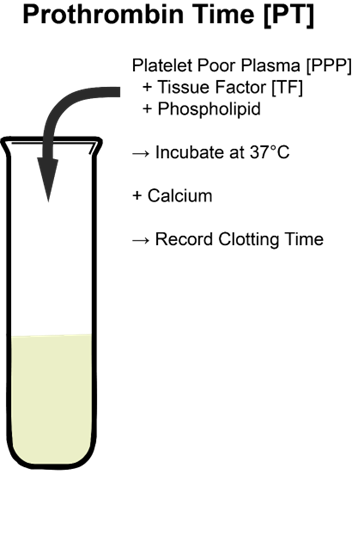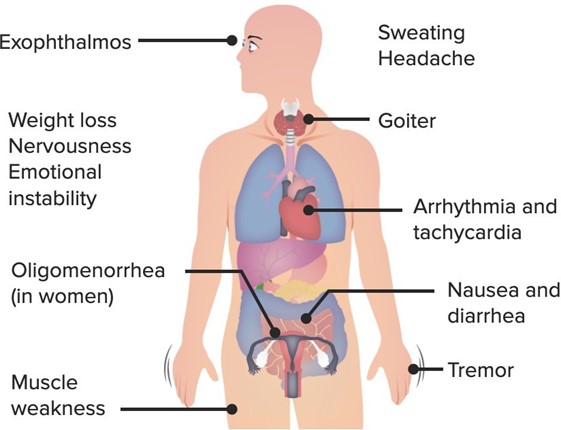A nurse is caring for a client who has a prescription for warfarin. Which of the following laboratory tests should the nurse monitor?
Triiodothyronine
Blood urea nitrogen
Arterial blood gases
Prothrombin time
The Correct Answer is D
Warfarin is an anticoagulant medication that works by inhibiting the synthesis of vitamin K-dependent clotting factors in the liver. Therefore, it is important to monitor the client's clotting ability to ensure that the medication is working properly and not causing any adverse effects. The laboratory test that is used to monitor warfarin therapy is the prothrombin time (PT), which measures the time it takes for the blood to clot. The nurse should monitor the client's PT regularly and adjust the dosage of warfarin as necessary to maintain the therapeutic range. Option a (Triiodothyronine) is a thyroid hormone and is not directly related to warfarin therapy. Option b (Blood urea nitrogen) is a measure of kidney function and is also not directly related to warfarin therapy. Option c (Arterial blood gases) is a measure of oxygen and carbon dioxide levels in the blood and is not related to warfarin therapy.

Nursing Test Bank
Naxlex Comprehensive Predictor Exams
Related Questions
Correct Answer is C
Explanation
Thyrotoxicosis refers to a state of excess thyroid hormone in the body, which can occur as a result of excessive levothyroxine dosage or other causes. Nervousness is a common symptom of thyrotoxicosis, characterized by an excessive or uncontrollable feeling of anxiety or restlessness. It is important for the client to report this symptom to the healthcare provider because it may indicate an imbalance in thyroid hormone levels and may require adjustment of the medication dosage.

Polyuria, which refers to increased urination, is not a specific symptom of thyrotoxicosis. It can occur due to various factors unrelated to thyroid function.
Pruritus, or itching, is not a common symptom of thyrotoxicosis. It may be associated with other conditions or causes.
Cough is not typically associated with thyrotoxicosis. It is more commonly related to respiratory or pulmonary conditions rather than thyroid dysfunction.
Correct Answer is D
Explanation
A.Maintain low-level lights in common areas.Inadequate lighting can contribute to disorientation and falls. Well-lit areas with natural or soft lighting are preferable.
B.Give the client several meal options at lunchtime.Too many choices can be overwhelming and increase confusion. Instead, limiting choices (e.g., offering just two meal options) is a better approach.
C.Confront the client regarding inappropriate behavior.Confrontation can increase agitation and distress. Instead, redirection and gentle guidance are more effective strategies.
D. Use symbols in the communal room signage.Clients experiencing confusion and memory loss benefit from visual cues and simple, clear communication. Using symbols (such as pictures of a toilet for the restroom or a plate for the dining area) can help them navigate the environment more easily and reduce frustration.
Whether you are a student looking to ace your exams or a practicing nurse seeking to enhance your expertise , our nursing education contents will empower you with the confidence and competence to make a difference in the lives of patients and become a respected leader in the healthcare field.
Visit Naxlex, invest in your future and unlock endless possibilities with our unparalleled nursing education contents today
Report Wrong Answer on the Current Question
Do you disagree with the answer? If yes, what is your expected answer? Explain.
Kindly be descriptive with the issue you are facing.
